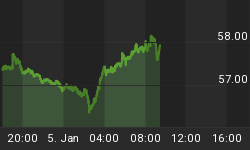This is the third week in a row where the "dumb money" is neutral and the "smart money" is bearish, and this is not a scenario that is generally supportive of higher prices especially with prices on the S&P500 under their 40 week moving average. The ideal situation for higher equity prices would be for the "smart money" to be bullish and the "dumb money" bearish (i.e., bull signal).
The "dumb money" or investment sentiment composite indicator (see figure 1, a weekly chart of the S&P500) looks for extremes in the data from 4 different groups of investors who historically have been wrong on the market: 1) Investor Intelligence; 2) Market Vane; 3) American Association of Individual Investors; and 4) the put call ratio.
Figure 1. "Dumb Money"
When combining the "dumb money" indicator with other metrics such as poor market internals and price under the 200 day moving average, we find that rallies tend to fail after 4 weeks of the "dumb money" indicator being neutral. Therefore, I would be a seller into rallies as the current set of conditions is more consistent with intermediate term topping action. In essence, we need to ask ourselves: what is going to propel prices higher? With sentiment no longer bearish (i.e., bull signal) and market internals lackluster, this bear market rally, which started in mid November, remains suspect.















